Click here to
see this email on the web
|
 |
Thursday, October 12th, 2023
|
|
Pastel Landscape Painting Demo: The Fine Art of Fine-Tuning
|
By Bob Bahr
|
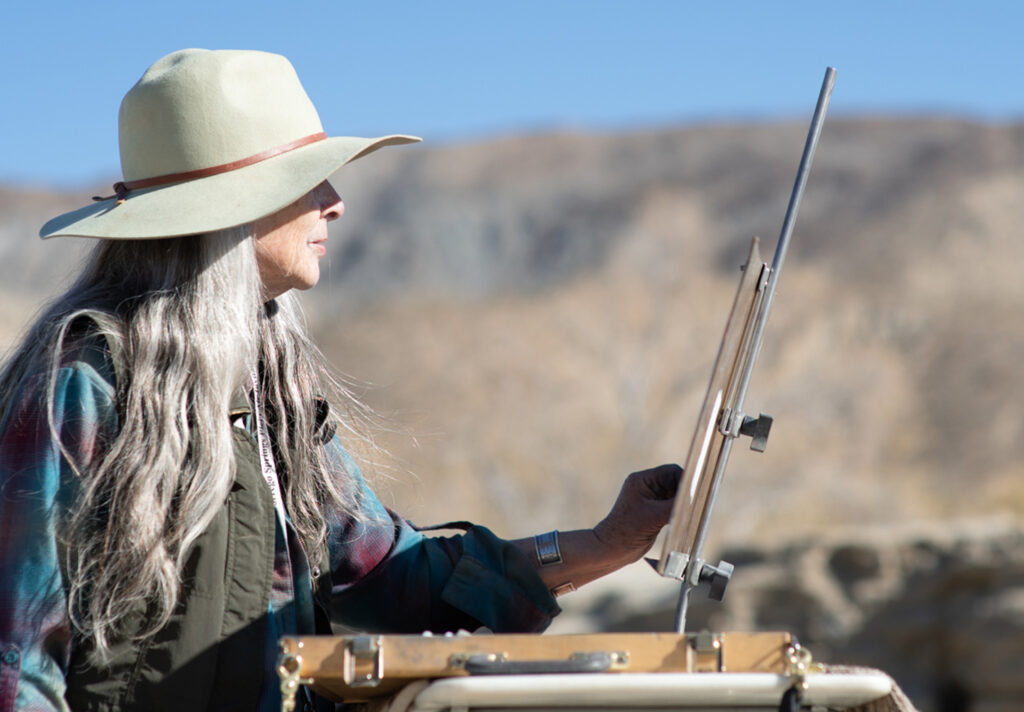 |
Margie Lucena has painted in different mediums over the years, but says something special happened when she picked up pastels for the first time. “Everything changed,” she says. “I finally found a way to express what my heart was trying to say.” (Photo courtesy of Scott Lorenzen)
|
For this New Mexico painter, pastel is the ideal vehicle for capturing the oft-hidden details of the desert.
Pastel artist Margi Lucena loves her New Mexico home, surrounded by desert beauty that not all can see. Indeed, because of the intense sun and heat, much of the life in the desert remains hidden. Unless there’s rain, living things tend to stay undercover, even if it’s in broken shade. One must learn to appreciate the small and the subtle. Margi sure does.
Clear about her admiration for the over-looked and inconspicuous, the artist says, “I will pull over for a bush by the side of the road. Things hide from the sun, but there is still so much going on. There is life under those bushes, little things that are so beautiful. You know something lives there. People may look around the desert and say there is nothing here — that’s just not so. There are quail — and baby quail — that you hear even if you don’t see them. There are lizards, roadrunners, and rattlesnakes.”
Demo, Step 1 |
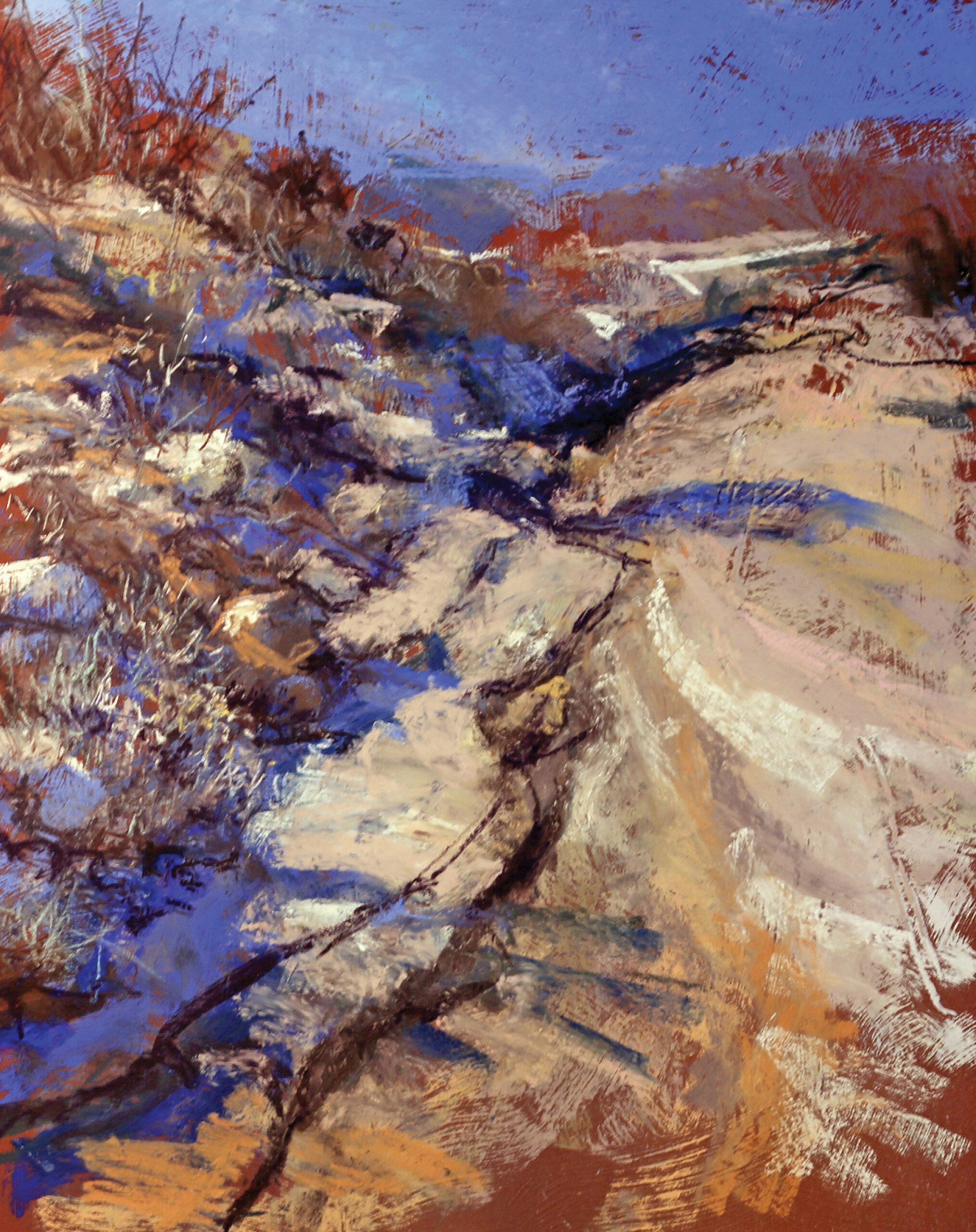 |
Most step-by-step demonstrations focus on the block-in and early development of a painting, but here, Margi explains the crucial phase of fine-tuning. “Fine-tuning makes all the difference,” she says. “I try to suggest detail rather than state it, so sometimes fine-tuning means getting rid of some detail.”
Pictured here is her painting fairly far along, but at this point Margi was not satisfied with the bottom right portion. “I liked the red underpainting that was showing through and really liked the progress of the piece, but I wanted to very subtly enhance the stones. In the process, I lost some of that red.”
|
— advertisement —
|
 |
Step 2 |
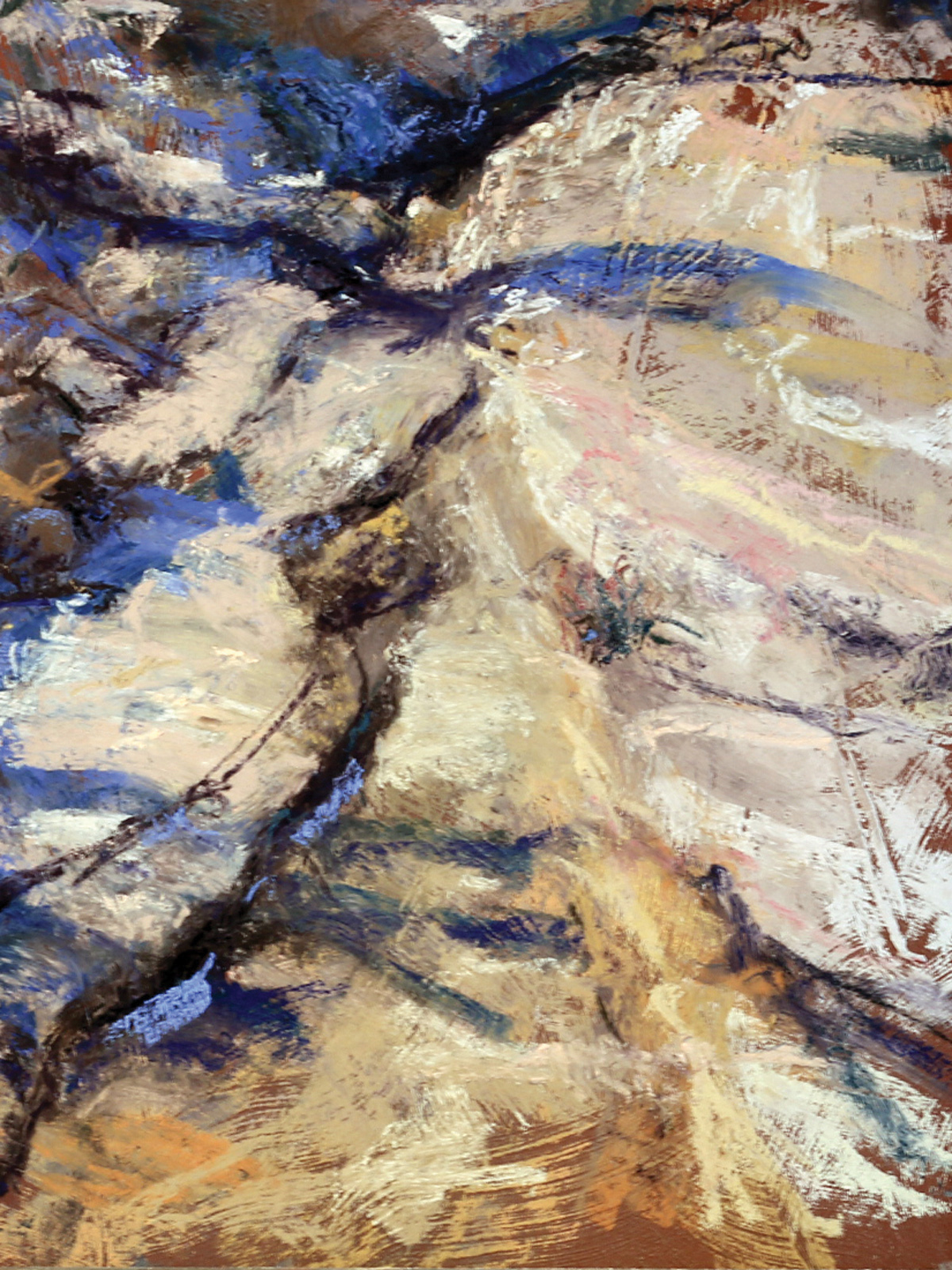 |
In this stage, Margi took advantage of directional strokes with the pastel stick to fine-tune a passage she felt needed attention. “The white was looking too much like snow, but the sand really was as stark and white as a snowfall,” the artist says. “So I laid the strokes in the shape of the rock and highlighted where the sun was hitting. Actually, most of it was lit, so it was more about the subtle shadows.”
She used an eggplant color for the darkest darks in the scene, which in this part of the painting were the cracks in the rocks. She placed a tiny segment of water in the rocks to show there was a drying stream there. By using something close to the sky color, she was able to communicate that it was water and also tie that part of the painting in with the sky via the reflection.
Step 3 |
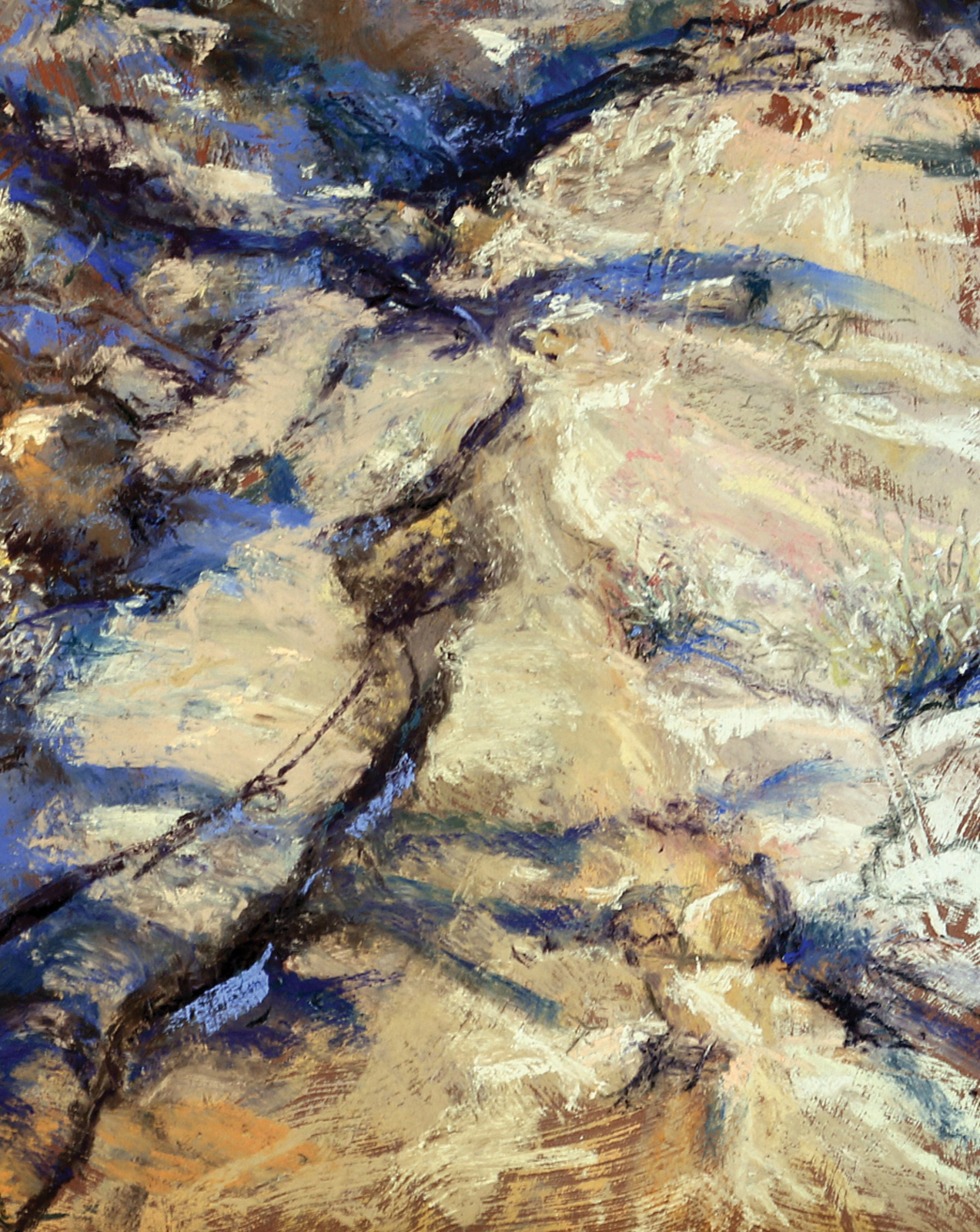 |
Here, you can see how Margi engaged in a push-and-pull approach to refine elements in this section of the painting. The outlines or borders of elements were nudged outward or inward until the desired drawing and the effect were achieved.
In situations like this, she advises that you “paint around rocks rather than paint rocks.” She says, “Put the darks in so the contrast itself makes the rocks.”
Step 4 |
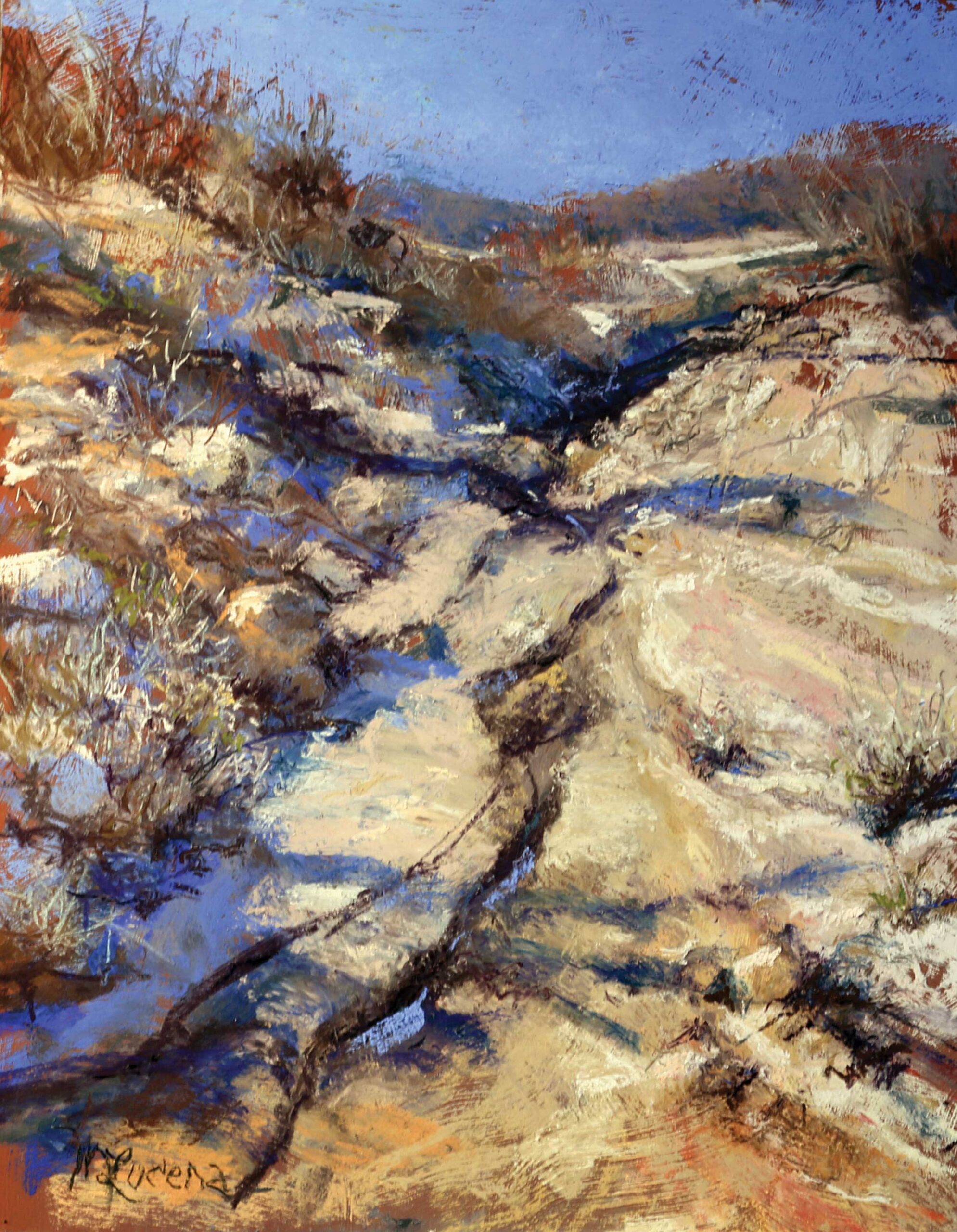 |
Margi Lucena, “Thirsty, Borrego Desert Spring,” 2022, pastel, 18 x 14 in., plein air, Available from Wilder Nightingale Fine Art, Taos
|
In the final stage, Margi introduced more cool blue into the scene and hit the edges of the stones with a very light color to boost the contrast. She pulled back on some of the darkest darks and refined the brush on the left.
“Push and pull — it’s the nice thing about pastels that you are able to put light over dark without it getting muddy,” she says. “The biggest issue is filling up the tooth and texture of the surface. I don’t even use paper because it is so delicate to handle. The prepared boards I use can slide into a box that makes them easy to transport from the field.”
|
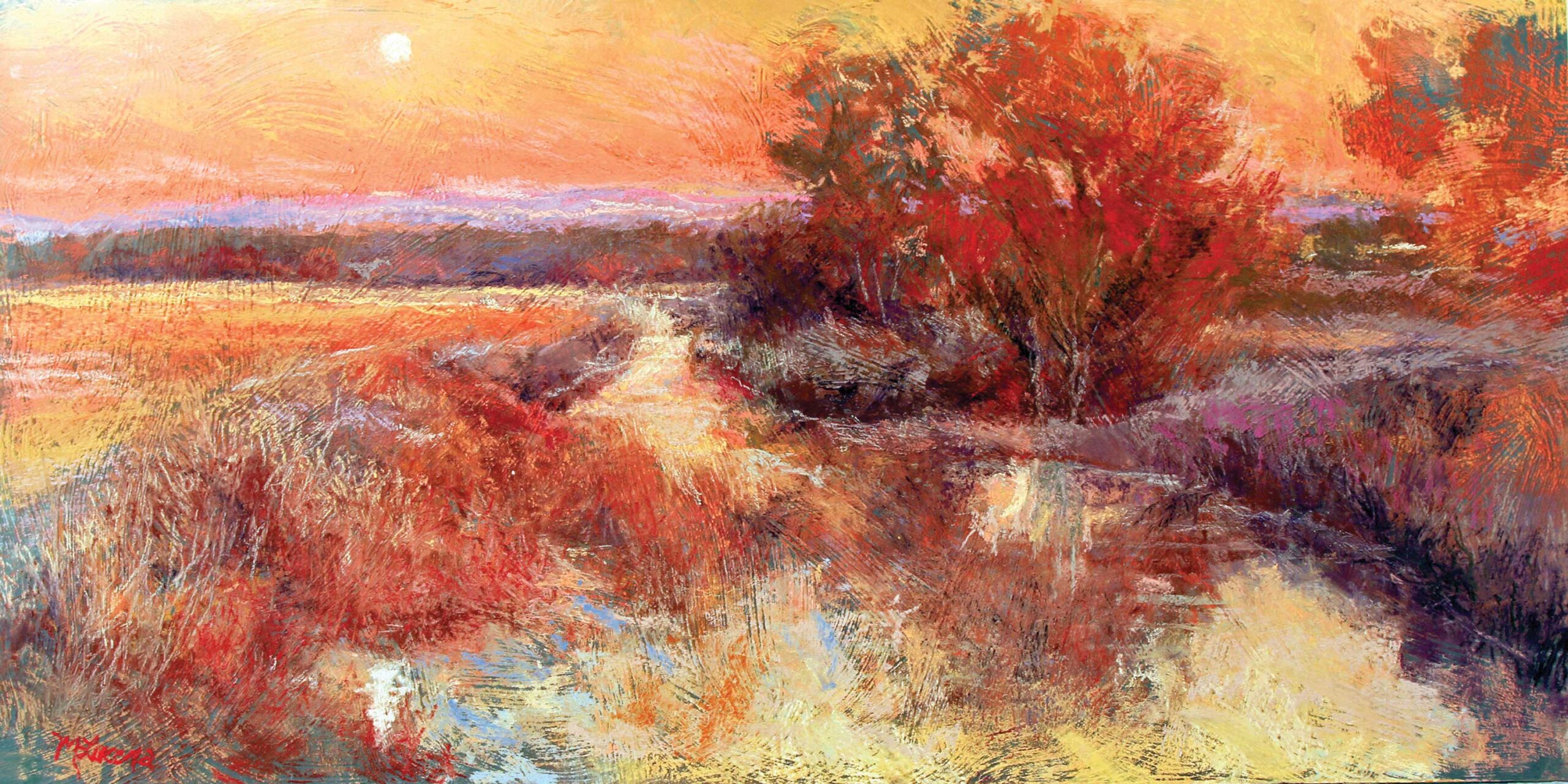 |
Margi Lucena, “Sunset Moon,” 2021, pastel, 12 x 24 in., plein air, available from Wilder Nightingale Fin eArt, Taos, NM
|
|
|
|
PleinAir® magazine is focused on landscape paintings by historical and contemporary artists, art collections, events, and the process of creating plein air paintings. Beautifully designed with rich reproductions on high-quality paper, PleinAir features the top artists and artworks from around the world. Start your subscription here!
|
— advertisement —
|
 |
Why I Love to Paint: A Plein Air Today Reader Spotlight
|
By Lois Griffel
|
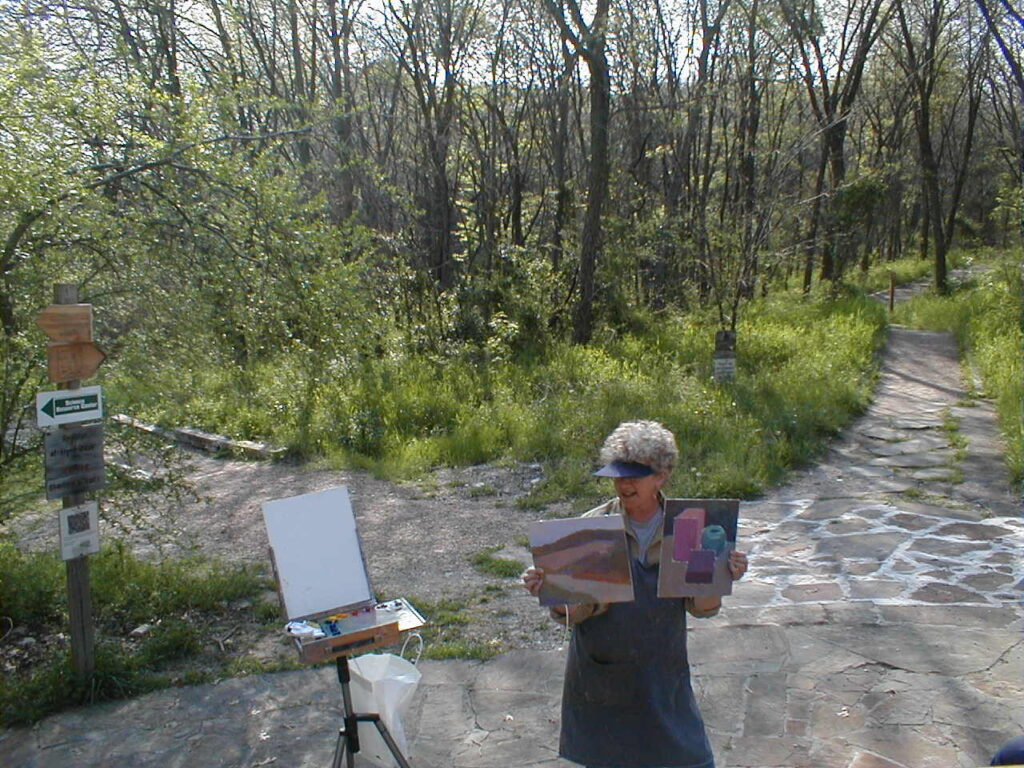 |
Plein air artist and teacher Lois Griffel
|
I am often asked, “Why do you like to paint?” My answer is that painting has been part of my being for as long as I can remember and I cannot imagine my life without it. I am endlessly inspired by nature and the visual world. It is so easy to get bogged down with life and its daily complexities but when I’m looking at a fence of roses, for example, my heart sings. And best of all, my heart sings when I see people enjoying my work.
Because I am constantly stimulated by colors, patterns, and light, I see paintings in everything. Almost every minute of the day, no matter where I am, my eyes are looking and my mind is composing. Of course, I try not to do this while driving!
The greatest gift we are given as artists is the ability to see the infinite variety of color changes in nature. Impressionism is not a way to paint, it is a way to see. It is not a painting method, but rather, a method for translating what we see into paint.
The act of painting is exhilarating but it has also taught me many lessons. It keeps me humble by giving me a mindset and dedication to constantly keep learning and growing as an artist. Being a lifetime student isn’t always easy, but it made me realize a long time ago that to be successful requires me to be open to new levels of development and creativity.
I try to use new discoveries, such as a new color or brush, to enhance my style. I enjoy reading about other artists’ journeys that helped them realize their ambitions. Above all, I love being inspired to paint. It’s the process, not the product for me. It is so exciting when I view something familiar in a different light. Because of the ever-changing light in Arizona, I am never at a loss for subject matter; choosing is the biggest dilemma.
“Why do we paint?” One of my teachers said that we can’t just look at something beautiful, or stimulating or different, and then just go home. As artists, we are driven to do something with it.
I have been told how much my work has inspired students and colleagues, not necessarily to take up painting, but to get involved with environmental movements and actions. I am grateful that recent technology allows greater correspondence. I hope my paintings serve as a reminder that nature is precious and fleeting and we must do everything in our power to preserve it.
|
— advertisement —
|
 |
— advertisement —
|
 |
|
|
|
|
|
Plein Air Today is committed to protecting and respecting your privacy. We do not rent or share your email address. By submitting your email address, you consent to Streamline Publishing delivering regular email issues and advertisements. To end your Plein Air Today e-mail subscription and associated external offers, unsubscribe here. To learn more about Streamline Publishing events, products, and offerings
visit StreamlinePublishing.com
Copyright 2023 Streamline Publishing, Inc. All rights reserved.
PleinAir® Magazine and Plein Air Today® are registered trademarks of Streamline Publishing, Inc. |
|
|
|
|